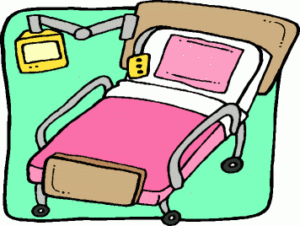
Are you a senior living with a chronic condition like diabetes, heart disease, or stroke? You’re not alone. In fact, the National Council on Aging reports that nearly 80% of all older adults in the U.S. have at least one chronic disease. The very process of aging can make day to day tasks more difficult, much less adding on a chronic condition that affects strength, energy levels, and mobility.
One key to seniors maintaining a sense of self-reliance and warding off feelings of stress, anxiety, and depression is being able to independently care for themselves. Oftentimes employing ease-of-use tools (like car transfer handles or reacher grabbers) and mobility aids (like canes and walkers) can help empower a senior with a chronic illness or disability. When it comes to maintaining safety and independence in the bedroom, however, bed rails are the go-to assistive device.
Repositioning, sitting up, and even turning over in bed can be difficult for seniors with functional limitations. And even the seemingly harmless act of getting in and out of bed can increase risk for falling and injuring yourself. If you are a senior looking to age in place and take advantage of tools that help you stay relatively independent, don’t miss this quick guide to how bed rails can work for you:
What Are Bed Rails and How Do They Work?
Bed rails offer a lot more than just safety. As fixed structures on either side of the bed available in a variety of shapes, designs, and sizes, they also offer support for getting in and out of bed, repositioning, sitting up, and turning over in bed. Some models also have small accessory pouches for keeping personal belongings or medicine handy.
Bed rails are relatively easy to set up and are normally supported by the floor or can be attached to your bed between the box spring and mattress. Some models are attached to both box spring and floor for additional support. Typically, bed rails will have mechanisms to raise up and lower down as needed for getting in and out of bed.
Types of Bed Rails
There are three main types of bed rails, each targeted at different use cases which makes it important to know the right type for your particular needs before buying one.
Safety rails
Just as the name suggests, safety rails are used for fall prevention during sleep. They’re not only ideal for older adults, but also for those who are prone to instability and uneasiness and who may roll out of bed. These bed rails are usually portable and can fit beds of most sizes including twin, queen, king and even electric or manual hospital beds. Depending on whether your bed is right next to a wall or not, you might want to buy one or two safety bed rails.
Bed bumper pads
Also known as bed bumpers and side rail protectors, these work the same way as safety rails. However, they feature thick pads that protect seniors from getting entangled in the rails. Also, they are softer than most safety rails and reduce chances of an elderly adult getting injured by bumping into the rails. Bed bumpers not only prevent falls but also offer an added sense of security.
Bed assist rails
Also known as bed handles, grab bars or transfer bed rails, these support rails for repositioning and rising out of bed are advantageous to unstable or elderly seniors who have difficulty entering or exiting the bed. These also provide support for repositioning, turning over, and simply getting comfortable in bed.
What to Consider When Buying a Bed Rail
It goes without saying that the type of rail you buy should be compatible with the size and type of your bed and mattress. It is ideal to measure your mattress before shopping for these types of assistive tools. If you don’t want them altering your carpet, don’t get rails that need to be fixed on to the floor; and remember, bed rails with big gaps between bars can turn out to be traps for arms and legs.
Another key factor to consider when buying bed rails is to make sure that they fold or collapse easily and don’t block you when you get in and out of the bed. Keep durability, size, and material in mind when examining cost as well, and know most bed rails are fairly inexpensive and offer great value. Your healthcare provider might also be able to suggest the ideal type of bed rail for your mobility level.